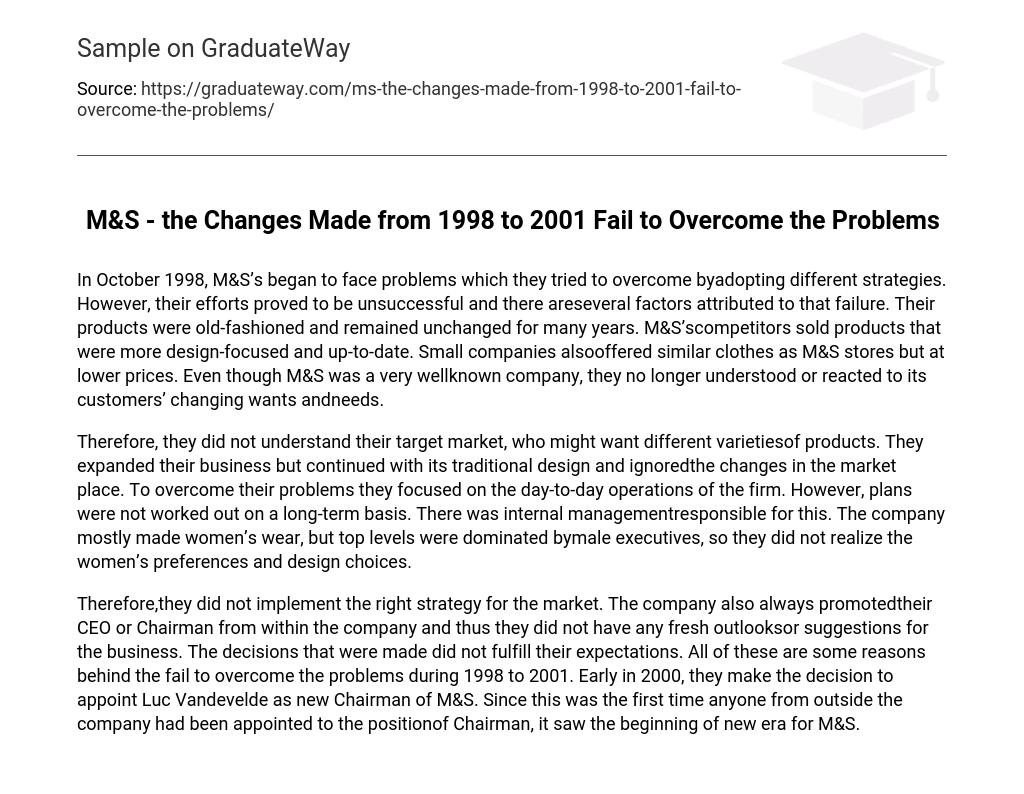In October 1998, M&S began encountering difficulties that they attempted to address through various strategies. Unfortunately, these efforts proved fruitless, as several factors contributed to their failure. M&S had outdated products that remained unchanged for extended periods of time. In contrast, their competitors sold more modern and stylish items. Additionally, smaller companies provided similar clothing options as M&S, but at lower costs. Despite being a renowned company, M&S lost touch with their customers’ evolving desires and needs.
As a result of their lack of understanding of their target market, the company did not recognize the demand for different product varieties. Despite expanding their business, they maintained a traditional design and neglected the market changes. In an attempt to overcome their challenges, they concentrated on the daily operations of the company, without considering long-term plans. This issue was internally managed. The company primarily focused on producing women’s wear, but the decision-making positions were predominantly occupied by male executives who were unaware of women’s preferences and design preferences.
Therefore, the company failed to implement the right strategy for the market, as well as lacking fresh outlooks or suggestions for the business due to always promoting their CEO or Chairman from within. As a result, the decisions made did not meet their expectations, leading to problems from 1998 to 2001. However, in early 2000, a new Chairman, Luc Vandevelde, was appointed from outside the company for the first time, marking the beginning of a new era for M&S.





